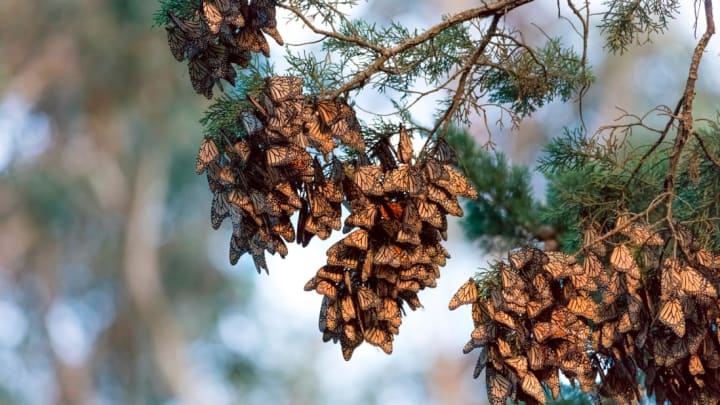Each fall, millions of migrating monarchs return to Mexico to wait out winter. The gathering makes Woodstock look like a business conference. Here’s how they get there.
Mosh Pit
In the mountains of central Mexico, the butterflies crowd on the branches of oyamel fir trees. The trees provide a perfect microclimate that prevents the butterflies from getting too hot or cold.
Texas Toast
After winter, the butterflies fly north to Texas in search of milkweed, where they lay their eggs. Many adults will die here; northbound monarchs generally live only three to seven weeks.
Juice Cleanse
One of the reasons monarchs love milkweed? Protection. As caterpillars, they absorb the toxins in the plant, which makes them less tasty to birds.
Connecting Flight
Eventually, a new generation of butterflies will make its way north to Canada. It takes multiple generations of butterflies to reach their final, most northerly destination.
Dine and Dash
On the way, butterflies will eat practically anything. Sure, there’s nectar—but they’ll also slurp the salts in mud.
Catching Air
When fall returns, a new generation of monarchs rides the air currents more than 3000 miles back to Mexico. They navigate by calibrating their body clocks with the position of the sun. (An internal magnetic compass helps them navigate on cloudy days.)
Latitude Adjustment
Monarchs “are one of the few creatures on Earth that can orient themselves both in latitude and longitude,” The New York Times reports—a feat sailors wouldn’t accomplish until the 1700s.
Southern Charm
Miraculously, each generation of southbound monarchs lives up to eight months—six times longer than their northbound descendants. Their longevity might have something to do with a process known as reproductive diapause (which is a fancy way of saying that the insects won’t breed until winter ends).
